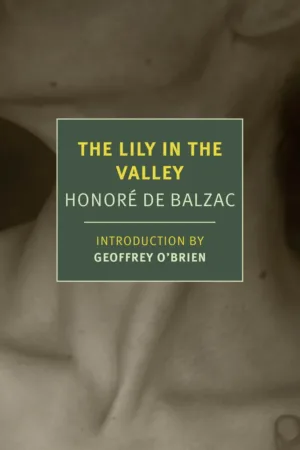The Lily in the Valley
by Honoré de Balzac, translated by Peter Bush
reviewed by Gideon Leek
Honoré de Balzac’s The Lily in the Valley, his fourteenth novel of nearly a hundred and the direct successor to his masterpiece Père Goriot, opens with a letter from Felix, a romantic young Frenchman, to Natalie, his beloved. Before taking their romance further, she had asked to know his past. He eagerly accepts, indulgently providing her with a two-hundred-page history of bottomless love for another woman—Henriette, now deceased—exceeding any acceptable amount of baggage and insulting Natalie in the process. Early in the letter, he excuses the outpouring to come: “It is the privilege of the woman we love more than she loves us to make us forget the rules of common sense at every turn.” One gets the sense the woman he is referring to is not the one reading the letter. Natalie’s response, which gets the final word in Balzac’s novel, suggests that they might be better as friends and invites Felix to reconsider before sending something so unflattering to another. She asks, “Have you never understood the virtue of a Don Juan? Don’t you sense his generosity when he swears he has never loved, and is in love for the first time?” The final letter is one of Balzac’s greatest achievements, and Peter Bush’s new translation of The Lily in the Valley is a gift: the first new edition in English of a rich, ironic commentary on youth, love, and the Romantics in 127 years.
Felix, the author of the flowery autobiography which dominates the middle of The Lily in the Valley, knows little of virtue or generosity. He has a chip on his shoulder and a vindictive streak, the roots of which lie in early unhappiness. “In my case, this contrast between my neglect and the happiness of others blighted the roses of childhood and stunted the green shoots of youth.” Felix’s depiction of his life is so aggressively self-serving as to give the truth a bizarre translucency. When Felix complains, “My teacher always saw me as a lonely, frowning focus of hate, and confirmed my family’s erroneous suspicions as to my bad character,” you get the impression that he’s playing the victim. His childhood “leading the life of a pariah,” “engrossed in mournful daydreams,” “excluded from all games,” left to skulk under a tree in “wretched solitude,” may well have been unhappy. But every misanthrope recalls having been a sweet sensitive youth; all too often, like Felix, they were just nasty and strange by nature.
Normally, such a person would spend his life nursing a root of bitterness, but The Lily in the Valley is a love story, and Felix, against all odds, falls in love. It happens simply. One day he sees a pretty girl, and an inner spring of human kindness wells up in him: “The previous pain I’d experienced in life enabled me to spread like a climbing plant over that beautiful soul where an enchanting world of shared feelings opened up for me.” But the response he seems to expect for this gush of emotion is unrealistic. In a candid moment, he compares his romantic expectation to the worship commanded by Napoleon: “Who hasn’t longed for that adoration I saw repeated on a grandiose scale a few months later when the whole of Paris rushed to the emperor on his return from the island of Elba?”
Henriette, the unsuspecting and unavailable woman he settles on, does not make a Napoleon of Felix. Instead, they are a match made in hell. After Felix fills her in on his early tortured years, she replies excitedly, “We have endured the same childhood!” This relationship is not the reality check Felix so desperately needs. Instead, a delirious, flowery, forbidden love follows. Felix says patent nonsense like, “Restless organ-pipes echo within us in a void, are passionate without cause, make sounds but no melody, emit chords that are lost in silence.” Henriette responds in kind: “Do you really think it dignifies a woman to force a man to swallow slices of toast she has buttered with virtue in order to convince him that religion and love are incompatible?” (Here you can see how well Bush’s translation works; in James Waring’s 1897 version the metaphor lacks specificity: “Do you think it worthy of a woman to stuff a man with bread buttered with virtue?”)
The Lily in the Valley is an arch, winking portrayal of Romantic hyperbole and a fresh follow-up to Balzac’s best-known novel, Père Goriot. Balzac, with his shining plaque in the halls of literary realism, is usually understood as a forebear of Zola, Flaubert, Huysmans, or else as a peer of Dickens and Stendhal. In The Lily in the Valley we find Balzac the satirist, someone closer to Jonathan Swift or Laurence Sterne. The Lily in the Valley is an odd duck—an ambitious, wonderful, uneven novel, but one so good and so rich that you have to give him credit for not going right back to the grim hard-times world of Père Goriot. After all, how better to follow up a great work of realism than by poking fun at the Romantics?
Published on September 24, 2024

